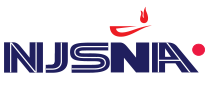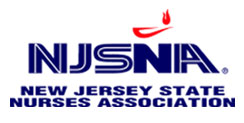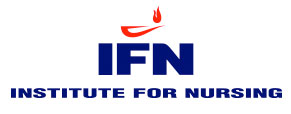Nursing Professor: We’re distracted. You can Google it.
 Within the Tate Galleries in London hangs one of history’s most evocative paintings depicting patient care—the 1887 painting by Sir Luke Fildes, entitled The Doctor. Considered to be a fine example of social realism, the painting’s central figure is the doctor in a home visit, sitting on the edge of a chair, leaning forward in a tripod position, his left hand supporting his chin, while giving the patient—a child in a makeshift bed—a contemplative but anxious gaze. Over the years, art connoisseurs and clinicians have analyzed the painting’s artistic merits and symbolic meaning. What particularly attracted my attention was the distilled and undistracted “presence” of the doctor in an old-fashioned visit-turned-vigil with the sick. The image is a mournful reminder of what Satya Nadella, the chief executive officer of Microsoft, calls the alarming scarcity of human attention and time in our electronically tethered world today. And nowhere is this scarcity felt more than from the sick bed.
Within the Tate Galleries in London hangs one of history’s most evocative paintings depicting patient care—the 1887 painting by Sir Luke Fildes, entitled The Doctor. Considered to be a fine example of social realism, the painting’s central figure is the doctor in a home visit, sitting on the edge of a chair, leaning forward in a tripod position, his left hand supporting his chin, while giving the patient—a child in a makeshift bed—a contemplative but anxious gaze. Over the years, art connoisseurs and clinicians have analyzed the painting’s artistic merits and symbolic meaning. What particularly attracted my attention was the distilled and undistracted “presence” of the doctor in an old-fashioned visit-turned-vigil with the sick. The image is a mournful reminder of what Satya Nadella, the chief executive officer of Microsoft, calls the alarming scarcity of human attention and time in our electronically tethered world today. And nowhere is this scarcity felt more than from the sick bed.
Touch, not tweet
In general, unless one is in the hospital for the birth of a healthy infant, healthcare organizations are lonely places to be. Boredom and bedsores are just two of the well-known adverse effects of not being attended to while hospitalized. Experts contend that social isolation is the twin of the ongoing pandemic. One of the sad realities of being placed on transmission-based precaution while institutionalized is that the patient or resident is visited less frequently by the staff. The fleeting human interaction is narrowed down to the banalities of patient safety argot such as “Can you tell me your name and date of birth?” Wouldn’t it be refreshing if the nurse went off-script and said, “If it’s okay with you, I’ll sit by the bedside and keep you company for a few minutes.” Perhaps, we might be enchanted once again by the essence of healing work.
During my ICU nursing days, I used to hold the patient’s hand while wedging the Swan Ganz catheter (yes, once upon a time RNs were allowed to “wedge” the Swan). In 10 seconds or less, the patient and I had clasped hands as I inflated the balloon, a symbolic wedging of our unique lives united in a common humanity. Perhaps I’m too sentimental. What I wanted to say is that empathy is best conveyed in human touch, not in salvos of mindless tweets. Being fully present, without judgment or advice, is the catalyst of empathy.
What were you saying?
Paying attention is vital for survival. If our Neanderthal ancestors didn’t fully focus while hunting and gathering, the human race might not have survived. For years, pundits and social psychologists have been lamenting the shrinking human attention span. Then, the internet came. Depending on which source you read (more often, skim), researchers say our ability to meaningfully focus on any given activity is down to a pittance of 8 seconds. This means I’ve already lost you at the end of the first sentence of this essay (thank you for staying with me up to this point). Googling the question “Is the human attention span decreasing?” yields 58 million results in 0.48 seconds. It’s ironic that the very technology that enables us to find information at breakneck speed also takes our mind away from what we came to look for. Googling something often transports me to an intersection busier than Times Square in tourist season. While browsing the internet, I get the false reassurance that I zip along the information superhighway with no speed limit when in fact I actually zig and zag in various detours of distraction. Case in point: The other day, I was searching online for the finer details of catecholamines in preparation for a lecture, but ended up ordering cat food instead. What might have been 5 minute of focused studying became a 30-minute shopping spree. The internet can save us time, but can also rob us of focus and extend learning time.
Turn around and reclaim attention
Walk into a classroom or a meeting and glance at the computer screens of attendees. What do you see? One time, during an 8 am class, I saw a student browsing an array of colorful shoes on sale as I presented on mindful communication with people with dementia. I thought, perhaps the shoes were going for a paltry $29.99, but adding the $10,000 tuition for the semester to the price tag, while shopping during class, it became one very expensive piece of footwear. But I digress. The point is, one cannot really master anything without paying attention.
As a faculty member, I very much appreciate it when students enable their video during Zoom, or when they are fully attuned to the topic at hand during live classes. In small bursts of old-fashioned engagement, I do an exercise I call “Turn to your neighbor and explain [insert topic here] for 30 seconds.” The cacophony of conversations (I teach large classes) that ensues reminds me of a buzzing full-house theater just before curtain time. For several seconds, students look up from their screens and look someone in the eye and have a conversation. This momentary digital fasting is a welcome distraction that can enhance human bonds, promote co-creation of learning, and improve attention bandwidth.
Ecology of attention
While the stakes of clinical care increase, attention spans shorten. Multitasking and paroxysmal task switching have become cardinal virtues of modern-day work. In patient care, distractions have been associated with medical errors, lapses in judgment, prolonged processing time of complex tasks (try titrating vasopressors while texting), and clinical bias. It can be assumed that the opposite is true. Indeed, reducing distractions can increase work enjoyment, improve communication, and enhance overall outcomes for specialized tasks. Now, isn’t nursing a specialized task?
At the bedside level, even for just a few minutes, clinicians can make an old-fashioned visit with a patient sans cell phone. What it takes is not self-discipline, but respect for self and others. Paying attention to our patients and peers is one measure of our emotional intelligence. Experts remind us that reachability is not a proxy for being fully present. Optimizing attention in clinical work will require a lifetime of concerted work on the ecology of attention that includes environmental management, adequate staffing, reduced cognitive load from electronic and human sources, and many others. In the meantime, we can refocus our attention—one patient, one task at a time.
— Fidelindo Lim is a clinical associate professor at New York University – Rory Meyers College of Nursing.
(This story originally appeared in American Nurse.)




